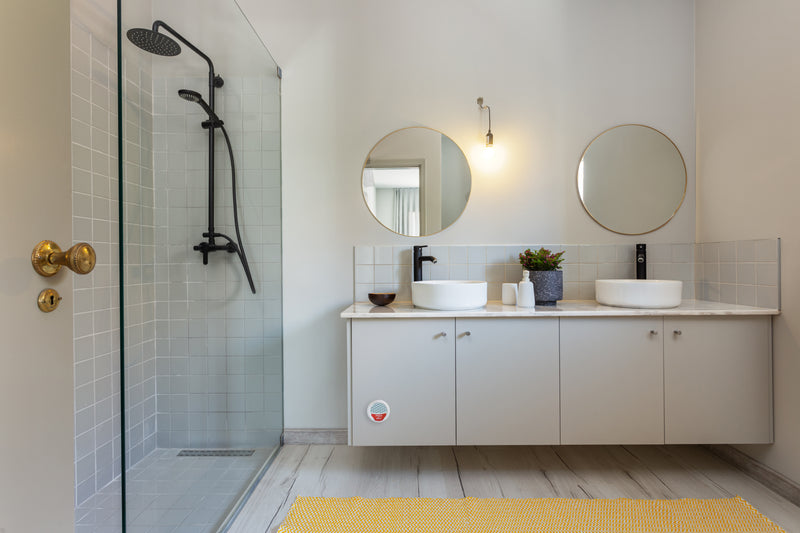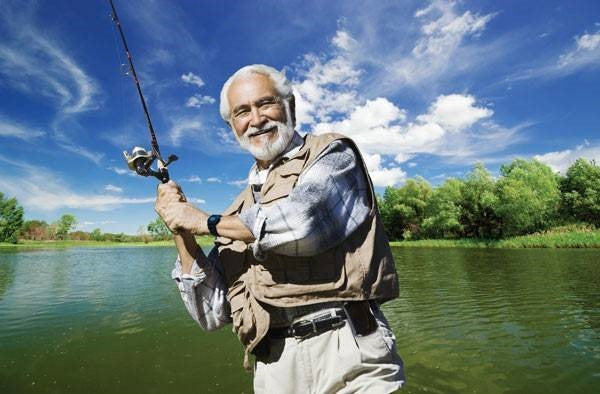Your Safety
Home Safety Checklist for Older Adults

Falls in the home are the leading cause of injury and decreased quality of life among older adults.
One out of four Americans aged 65+ will experience a fall this year. Of these, one of every five falls will result in serious injury, such as damage to the brain, hip and wrist fracture. These injuries can greatly decrease quality of life and length of independent living. For the majority of older adults who do not experience any visible injury as a result of the fall, an equally challenging scenario occurs.
"Many people who fall, even if they’re not injured, become afraid of falling. This fear may cause a person to cut down on their everyday activities. When a person is less active, they become weaker and this increases their chances of falling." - Centers for Disease Control and Prevention
Three million older adults are treated in emergency departments for fall injuries each year. 300,000 of these older adults will be treated for a hip fracture. More than 95% of hip fractures are caused by falling, usually by falling sideways. In 2015, total medical costs for falls totaled more than $50 billion.10 Medicare and Medicaid shouldered 75% of these costs (CDC).
Once an older adult experiences a fall, the chances that they will experience another fall is doubled.
Unfortunately, as reported by the CDC, only half of these falls are reported to a physician, caregiver or family member. Whether you are an older adult, caregiver, adult child, family member or friend of an older adult, there are many reasons to educate yourself on fall risks in the home.
"Because the natural aging process can affect vision, strength and balance, adults 65 and older are at elevated risk for falls, however falls are not a natural part of aging and can be prevented." -National Safety Council
While these are startling statistics, there are many things you can do to reduce fall risks and increase safety for yourself and your loved ones. Keeping a safe home is the most important factor in reducing fall risks and ensuring long-lasting independent living. We're going to look at some of the most frequent fall risks that can be easily eliminated and potentially save a life. There are some simple safety precautions that will help to ensure the best possible quality of life and extended independent living for older adults.
Falls in the Home
The National Council on Aging reports falls to be the leading cause of fatal injury and the most common cause of nonfatal trauma-related hospital admissions among older adults. Every 11 seconds, an older adult is treated in the emergency room for a fall; every 19 minutes, an older adult dies from a fall.
In 2002, as reported by the CDC, 1.6 million people over the age of 65 were treated in emergency departments of healthcare centers in America. The financial toll for older adult falls is expected to increase as the population ages and may reach $67.7 billion by 2020.
"Every second of every day in the United States an older adult falls, making falls the number one cause of injuries and deaths from injury among older Americans. In 2014 alone, older Americans experienced 29 million falls causing seven million injuries and costing an estimated $31 billion in annual Medicare costs, according to a new report published by the Centers for Disease Control and Prevention in this week’s Morbidity and Mortality Weekly Report (MMWR)."-Centers for Disease Control and Prevention
As the average age of Americans increases, so do the risks for falls in the home, as the home is often where older adults spend the majority of their time. Over 10,000 Americans turn 65 each day, and as the average lifespan increases, so does the number of fall-related injuries and deaths.
However, you have the power to protect yourself and your loved ones from falls in the home. With a few simple steps and a checklist for precautions, we're going to review some of the most important tasks to safeguard your home or the home of a loved one.
Home Safety Checklist
Answer each of the following questions regarding risks in the home.
If you select "yes," be sure to take the steps we provide in order to minimize the risk of a fall.
In the few minutes it takes to clear a fall risk from the home, you can add years of independent living to your life as an older adult.
Home Safety: Floors
Do you have to walk around furniture or other items when walking through rooms?
No
Yes
Do you have decorative rugs on the floor?
No
Yes
Are there books, towels, boxes, blankets or other objects on the floor?
No
Yes
Are there wires or cords that you have to walk over on the floor (i.e. lamps, telephones, surge protectors)?
No
Yes
Home Safety: Stairs
Are there any belongings on inside or outdoor staircases that could cause you to trip and experience a fall? (This includes stacks of paper, books, shoes, boxes and any other objects.)
No
Yes
Are there any structural problems, such as loose or uneven steps, on indoor or outdoor staircases?
No
Yes
Is there a light above each stairway in your home?
No
Yes
Do you have only one light switch for a stairway, either at the top or bottom of stairs?
Yes
No
Is there frayed carpet in any stairway of your home?
No
Yes
Are there any loose or broken handrails in the stairways of your home?
No
Yes
Home Safety: Kitchen
Are there any items that you use often on high shelves?
No
Yes
Do you have a sturdy step stool?
No
Yes
Home Safety: Bathrooms
Does every bathroom in your home have non-slip rubber mats in the tub or shower floor?
No
Yes
Do you experience any trouble while getting out of the tub or up from the toilet in your bathroom?
No
Yes
Home Safety: Bedrooms
Is there a light that is within reach of the bed in every room?
No
Yes
Is there a well-lit path from your bed to the bathroom?
No
Yes
Home Safety Tips
Consider each of the following actions you can take to safeguard your home. These tips can help you to prevent falls.
Exercise regularly. A few minutes each day of activity can help to improve balance and coordination, which will reduce your risk of falling.
"Simply adding the right exercises to your regular routine can make an enormous impact on your safety by strengthening the body, boosting blood flow to the lower extremities, improving neurological function and even helping to enhance your body’s proprioceptive powers" - health.USnews
See your primary care physician or a pharmacist you trust to review all of the medications you take. There are medications that can make you sleepy, dizzy or despondent. Be sure to know what medication affect your balance and take the proper steps to avoid falls.
"Older adults are more likely to have medical conditions that cause dizziness, especially a sense of imbalance. They're also more likely to take medications that can cause dizziness." - MayoClinic
Have your vision checked by an Optometrist at least once every year. Poor vision is a fall risk that can easily be eliminated.
"According to the Centers for Disease Control and Prevention (CDC), more than one-third of adults ages 65 and older fall each year in the United States. People with vision loss are almost twice as likely to experience multiple falls as those with normal vision." - VisionAware
Avoid slippers and going barefoot, as this can increase fall risk. Wear shoes when you are both inside and outside of the home.
"Foot and ankle exercises, foot orthoses and particularly, wearing appropriate footwear are all key to preventing falls." - MyAgingParent.com
Make sure that the lighting in your home is bright in every room. Florescent bulbs are bright and more affordable than other options.
"The National Institute on Aging recommends that people with low vision change the type of lighting they use. Let us be a little more specific for you.
Older eyes need more light, especially for distinguishing fine details. The Illuminating Engineering Society of North America (IESNA) has found that people who are 65 and older need four times the amount of light that individuals who are 25 years old and younger." - PegasusLighting.com
Reduce the glare from all windows within your home. Be sure to hang lightweight curtains or install shades that will reduce any glare and minimize safety risks.
"Lighting that is too bright can create its own problems. Sunlight is often the culprit in this situation, but so can lamps that create a glare. A room that is too bright can prevent you from properly assessing hazards in the room, and bright lights may also trigger lightheadedness that leads to a loss of balance." - Aging.com
Consider decorative details that will enhance your vision and reduce fall risks.
"Paint a contrasting color on the top edge of all steps so you can see the stairs better. For example, use a light color paint on dark wood." - National Center for Disease Control
Other Safety Tips
Consider each of the following steps you can take to ensure your safety and improve your quality of life as an older adult.
Wear a medical alert device that will send help to you if you fall and can't get up.
MobileHelp is a company with 100% US-based Customer Care, Support and Emergency Monitoring. MobileHelp medical alert systems do not require a landline and keep you protected 24/7, at home and away. Click here to browse MobileHelp medical alert systems.
List your emergency contacts in large print and keep the sheet close to every phone in your home.
If an emergency were to arise, you want to be sure that whoever comes to help you is able to contact your family, doctors, caregivers, etc.







